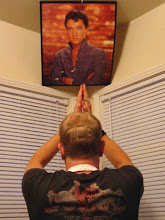Geometry Standards (3rd - 5th)
Since I now have my own Elementary Mathematics Class through the Portland Impact after school Sun Program, I am very interested in the standards for Geometry. One of the main reasons is because I like to use material that I am currently studying for building my curriculum for the class. Last week for example I brought in the three dimensional polyhedra that we made for this class, and let each student pick one shape out randomly from the bag. Then, I had the kids try to pair up with the other children that had the most similar polyhedral to them. One girl had the perfect pyramid and I had the regular octahedron, which lead the class to the realization that an octahedron is made up of two perfect pyramids. From this point we branched off into a discussion about the “nets” or two dimensional shapes for the polyhedron. I did not hesitate to let the children take apart what Trip and I had spent so much time taping together, for the sake of Geometrical “hands on” learning experience. I think a lot of the children really enjoyed seeing the two dimensional shapes for the polyhedron, which led me to believe that deep down they had a better understanding or at least familiarity with shapes, over polygons. One girl in the class went so far as to create and construct a net and from that her own three dimensional polyhedron, in this case a cube or hexahedron. I was impressed by her appreciation and thirst for Geometrical knowledge. I later talked about my class with the Portland Impact coordinator and the Buckman Sun Program coordinator, only to find out that they were less than impressed that these kids were learning actual Geometry. Apparently they aren’t aware of these standards that are part of the NCTM. I am glad that I will have them on me for next week.
I am not sure if I will cover any Geometry dealing with area, but if I do, I would like to discuss the relationship between a nonrectangular parallelogram and rectangle both with equal bases and heights. It likes a fun exercise in showing kids how very different two areas can look and still be congruent. It would be a really great learning exercise to open up the discussion from there as well as take graph paper to really expand and manipulate the area. For example, by using graph paper, children really gain an understanding for the unit and the value of the quantity of the area, as opposed to just getting an answer. In graph paper one can actually see the area very clearly. This also allows the manipulation of the area to be very easily managed by the student in his own fashion. Therefore are can be broken down into many smaller areas of squares, rectangles and triangles. I would think this would be a great activity and I will consider it for my class. I have no shortage of curriculum ideas already, and I don’t even have a Teacher’s credential for this state. It’s too bad I will need to get one, if I want to teach in Oregon. I feel that I am already ahead of a lot of the current teachers where I work.
Tuesday, October 7, 2008
Subscribe to:
Post Comments (Atom)










No comments:
Post a Comment